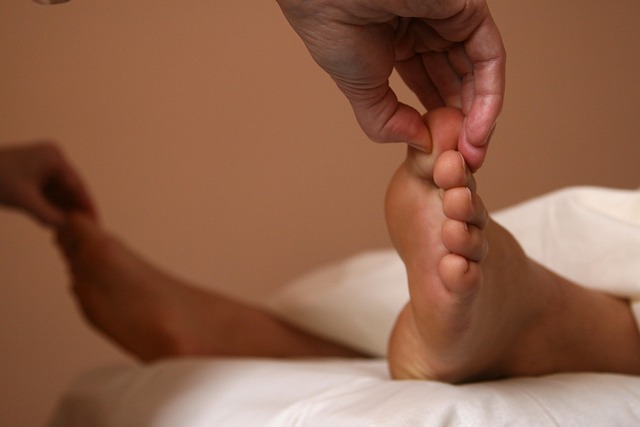Poor posture, driven by sedentary lifestyles and incorrect sitting habits, can cause imbalances, chronic pain, reduced mobility, and respiratory issues. Core strengthening routines, including planks, Russian twists, and bird dogs, target abdominal, back, and pelvic muscles to improve posture, enhance stability, and promote better body alignment throughout the day. Prioritizing these routines and mindful sitting/standing positions can significantly reduce back pain risks and improve overall physical well-being. For specific postural issues like forward shoulders or hunched backs, advanced core exercises targeting the spine are particularly effective.
Maintaining proper posture is crucial for a healthy body and overall well-being. Poor alignment can lead to discomfort, muscle strain, and long-term health issues. This article offers expert solutions to transform your posture and align your body optimally. We explore the impact of poor posture, delve into effective core strengthening routines, provide practical tips for daily good posture, and introduce advanced techniques to target specific postural problems. Embrace a healthier you by discovering these valuable insights.
- Understanding the Impact of Poor Posture
- Core Strengthening Routines for Optimal Alignment
- Practical Tips for Maintaining Good Posture Throughout the Day
- Advanced Techniques for Targeting Specific Postural Issues
Understanding the Impact of Poor Posture

Poor posture, often a result of sedentary lifestyles and incorrect sitting habits, can have profound effects on overall health and well-being. It weakens core muscles, leading to imbalances in the body’s alignment. Over time, this misalignment can contribute to chronic pain, reduced mobility, and even respiratory issues. Core strengthening routines are essential tools to combat these negative impacts. By focusing on exercises that target the abdominal, back, and pelvic muscles, individuals can improve their posture, enhance stability, and promote better alignment throughout the day.
Core Strengthening Routines for Optimal Alignment

Maintaining good posture and alignment is heavily reliant on a strong core—the body’s central pillar supporting the spine, organs, and upper body. Incorporating regular core strengthening routines into your fitness regimen can significantly enhance overall stability and balance. Exercises like planks, Russian twists, and bird dogs not only strengthen muscles in your abdomen and back but also improve communication between the brain and muscles, leading to better postural control.
For optimal alignment, focus on exercises that target the transverse abdominis, rectus abdominis, and multifidus muscles. The transverse abdominis acts as a stabilizing belt around your torso, while the rectus abdominis facilitates bending and twisting movements. The multifidus muscles, located along the spine, are responsible for its flexibility and stability. By strengthening these core muscles, you create a solid foundation for good posture, reducing the risk of back pain and improving overall physical well-being.
Practical Tips for Maintaining Good Posture Throughout the Day

Maintaining good posture is essential for a healthier, happier body—and it’s easier than you think! Start by focusing on your core; strengthening routines targeting your abdominal and back muscles can significantly improve your posture. Simple daily exercises like planks, bridges, and bird dogs can make a world of difference.
Throughout the day, be mindful of your sitting and standing positions. Keep your shoulders relaxed and back, your ears aligned with your shoulders, and your feet flat on the floor. Whether working at a desk or strolling down the street, good posture protects your spine, reduces muscle tension, and enhances overall well-being.
Advanced Techniques for Targeting Specific Postural Issues

Advanced techniques offer targeted solutions for specific postural issues, addressing imbalances that contribute to poor alignment. For instance, core strengthening routines are instrumental in stabilizing the spine and improving posture, particularly for those with a forward shoulder or hunched back. These exercises focus on engaging muscles that support the vertebral column, promoting better distribution of weight and reducing strain on individual joints.
Incorporating yoga poses like the cat-cow stretch can also be beneficial, as it enhances spinal flexibility and encourages a more neutral spine position. Additionally, myofascial release techniques help release tension in tight muscles, fostering a deeper understanding of body alignment and encouraging natural postural correction over time.
In conclusion, adopting expert posture and alignment solutions is paramount for achieving a healthier body. By understanding the impact of poor posture, implementing core strengthening routines, and utilizing practical tips throughout the day, you can significantly improve your overall well-being. Moreover, advanced techniques tailored to specific postural issues offer a comprehensive approach to achieving optimal alignment. Remember that consistent practice and dedication are key to unlocking these benefits and fostering long-term health.
